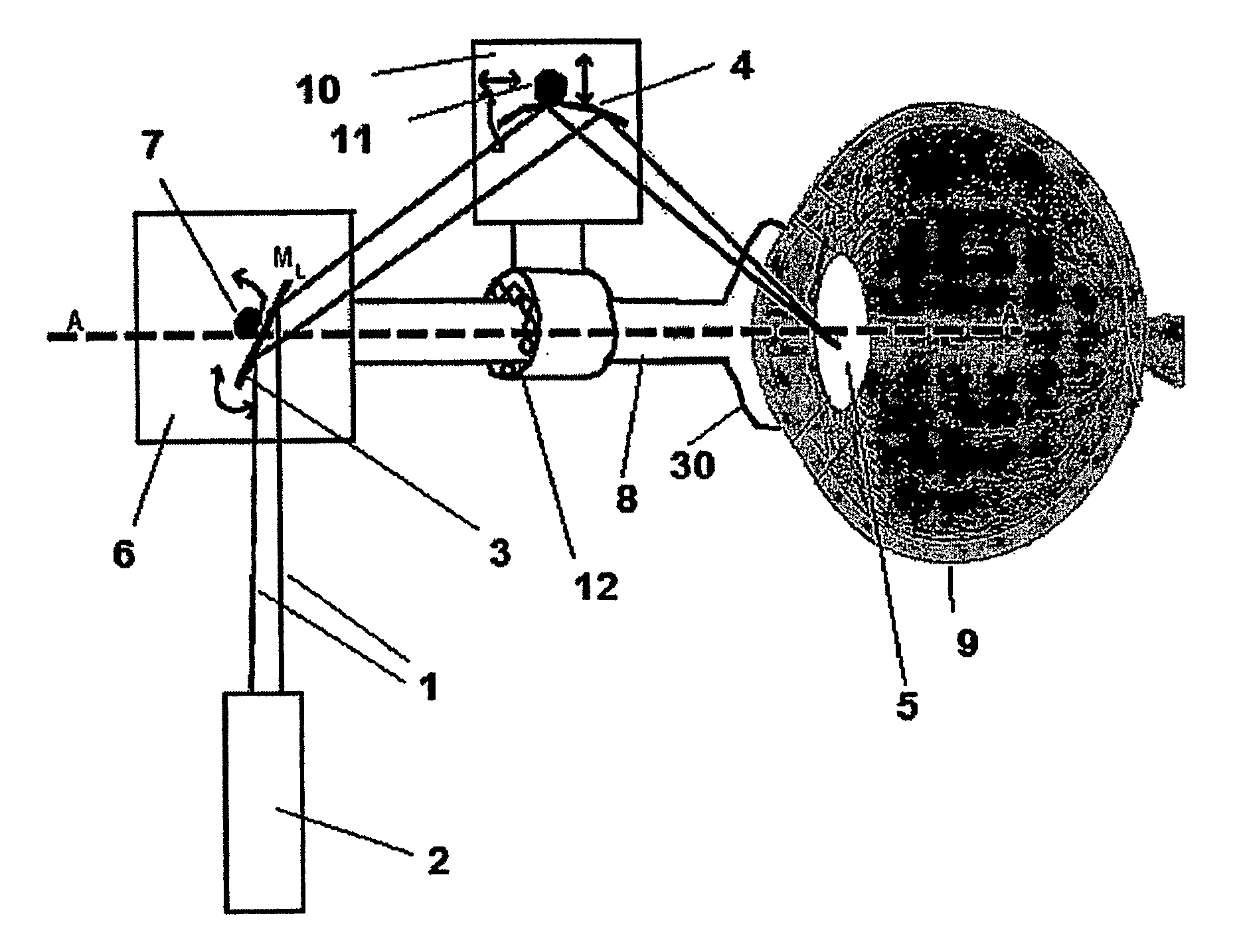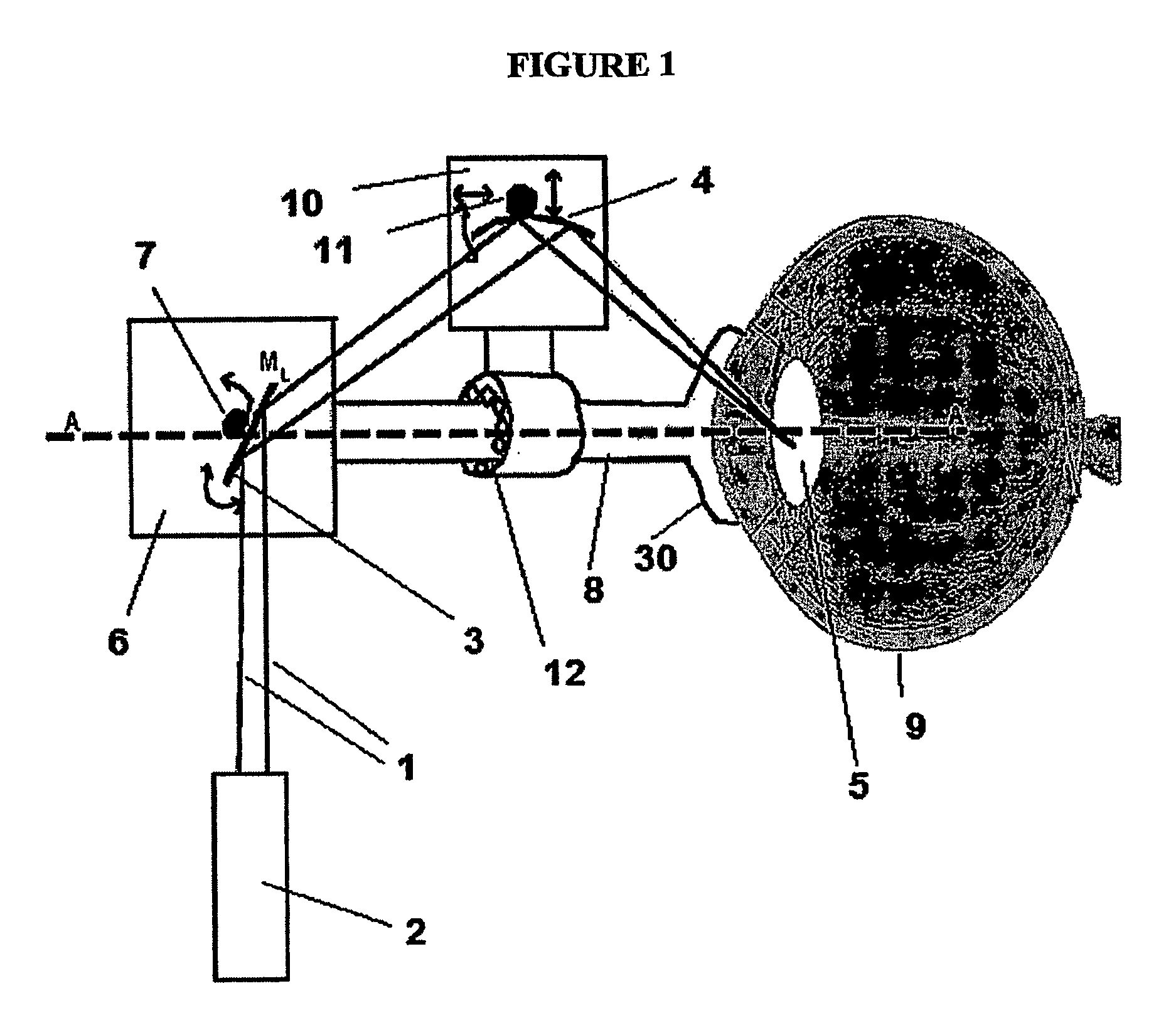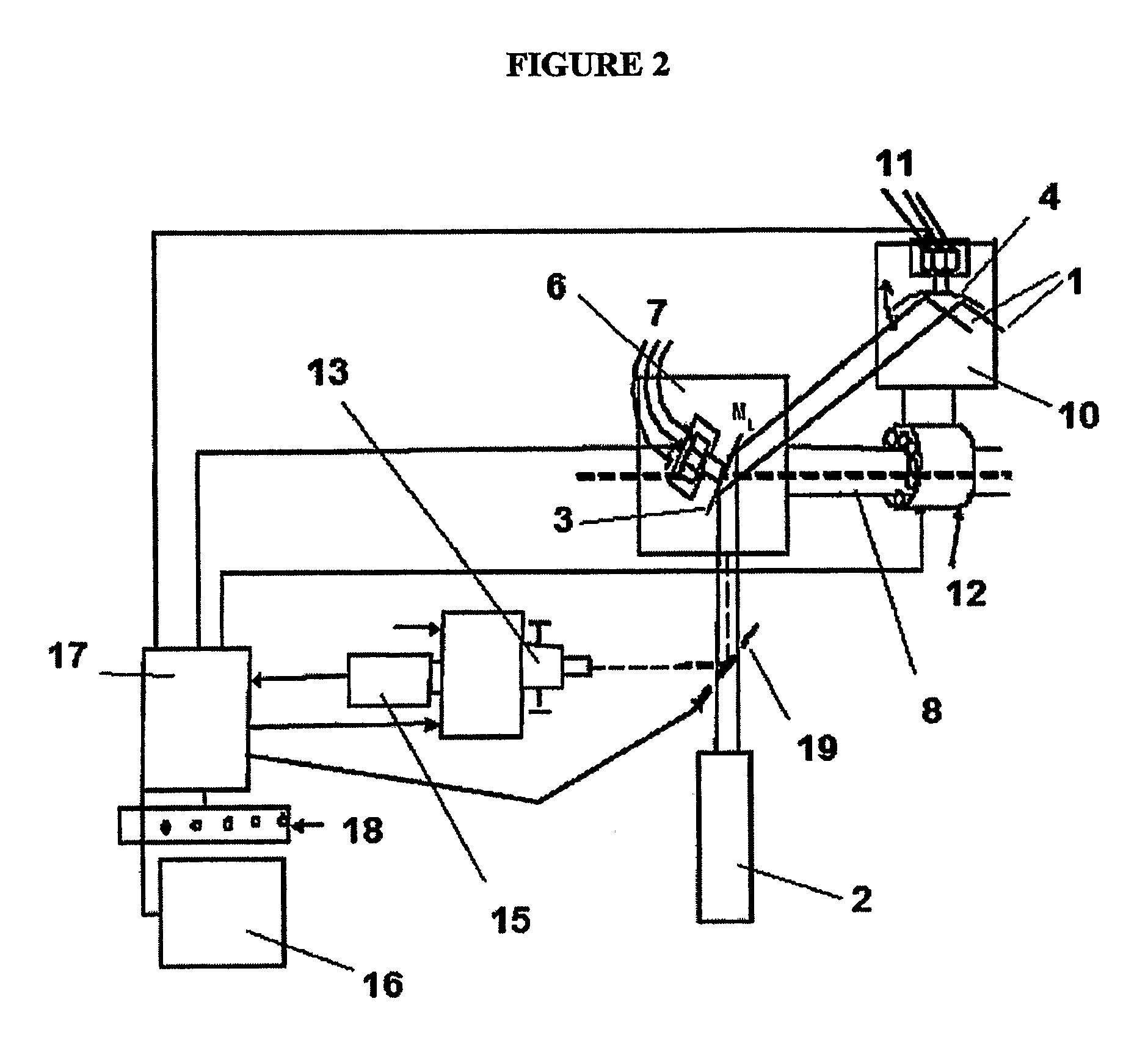Devices, Methods and Compositions for Presbyopia Correction Using Ultrashort Pulse Laser
- Summary
- Abstract
- Description
- Claims
- Application Information
AI Technical Summary
Benefits of technology
Problems solved by technology
Method used
Image
Examples
example 1
[0078]One directs the laser beam (1) from “Fsec Laser” (see FIG. 1) by mirror (3) to spherical mirrors (4) which focus the laser beam into different locations within the eye lens. One places mirrors (3) and (4) on two separate platforms which are mechanically connected to the housing cylinder (8). One mounts on platform (6) on a mirror (3) that is rigidly connected to cylinder (8). The housing provides a stabilization mechanism (30) for the eye. One locates another mirror on platform (10) with mirror (4) that can rotate around cylinder (8) by means of the rotating mechanism (12). One synchronizes rotation of platform (10) with the angular movement of mirror (3) in such a way that the laser beam reflects from mirror (3) to always passes onto mirror (4). One sets the angle of mirror (3) by micro-motors, which are controlled and monitored by computer. The angle and position of mirror (4) on platform (10) are also set by micro-motors, which are controlled and monit...
example 2
Computer Program and Procedure
[0086]FIG. 8 shows a flow chart of the procedure for laser surgery of the human eye lens using specifically-designed software. It ends in a decision tree, with four possibilities: presbyopia corrective surgery, partial cataract surgery, full cataract surgery, or no surgery. FIG. 9 shows the flow chart for presbyopia correction, the particular procedure of interest here.
[0087]In certain embodiments, the software executes a method comprising three steps. One enters patient-specific data on lens metrics (for example, size, shape, Young's modulus distribution, refractive index distribution, range of accommodation) and computes the optical and mechanical performance of the particular lens. In some embodiments, one may use a commercially available design tool (possibilities include, but are not confined to, AutoCAD, CATIA and ProEngineer) to model the geometry of the lens, its capsule and the ciliary muscle attachments. In further embodiments, one models info...
example 3
Stress Distributions During Accommodation
[0091]One of the advantages of using ABAQUS instead of Pro-engineer for further analysis was to detail the stress distributions developed in the lens during the process of accommodation. Simulations showed that the greatest stresses occurred at the point of attachment of the zonules and the lens. The maximum in-plane stresses occur at the equatorial region of the lens. By various changes in geometry one can evaluate surgical impact on restoring accommodation. After introducing various incisions into the lens, the model can be stressed and the resulting optical power calculated.
[0092]In the first attempt to increase the amplitude of accommodation a small donut hole was make in the lens. This was done by creating a circular hole of a radius of 0.3 mm in the axisymmetric cross section of the lens. The hole was assumed to remain empty; however, the hole could be filled with water or other fluid with desired mechanical properties. The deformed len...
PUM
 Login to View More
Login to View More Abstract
Description
Claims
Application Information
 Login to View More
Login to View More - R&D
- Intellectual Property
- Life Sciences
- Materials
- Tech Scout
- Unparalleled Data Quality
- Higher Quality Content
- 60% Fewer Hallucinations
Browse by: Latest US Patents, China's latest patents, Technical Efficacy Thesaurus, Application Domain, Technology Topic, Popular Technical Reports.
© 2025 PatSnap. All rights reserved.Legal|Privacy policy|Modern Slavery Act Transparency Statement|Sitemap|About US| Contact US: help@patsnap.com



